Study on Vibration Transmission among Units in Underground Powerhouse of a Hydropower Station
Abstract
:1. Introduction
2. Field Structural Vibration Test
2.1. Field Tests Overview
2.2. Preliminary Tests Results
2.3. Vibration Transmission Rules of Tests
2.3.1. Vibration Intensity
2.3.2. Signal Component
3. Study of Vibration Transmission Mechanism
3.1. Simplication of Powerhouse Structure
3.2. Establishment of Vibration Models
3.3. Rules of Vibration Transmission Ratios
4. Numerical Simulation
4.1. Establishment of Finite Element Model
4.2. Results of Numerical Simulation
4.2.1. Transmission Rules among Units of Vibration in Three Directions
4.2.2. Transmission Rules under Different Vibration Sources
5. Discussion
6. Conclusions
- (a)
- Vibration transmission ratio of lateral-river vibration is significantly larger than those of longitude-river vibration and vertical vibration. The transmission ratio between adjacent units of lateral-river vibration is about 15–25%, while those of longitude-river vibration and vertical vibration are about 10–15%.
- (b)
- Low frequency tail fluctuation and the rotation of hydraulic generator are the main vibration sources of powerhouse structural vibration. Vibration transmission ratios of the vibration caused by the two sources are basically equal.
Author Contributions
Funding
Acknowledgments
Conflicts of Interest
Abbreviations
| A | Amplitude of load |
| E | Elastic modulus of bedrock |
| F(t) | Load applied on the unit |
| G | Shear modulus of bedrock |
| h | Depth of bedrock considered |
| K′ | Section shape coefficient |
| K2x | Compression stiffness between m2 and left boundary |
| K3x | Compression stiffness between m3 and right boundary |
| K23 | Compression stiffness between m2 and m3 |
| K12 | Compression stiffness between m1 and m2 |
| K2z | Compression stiffness between m2 and the bottom boundary |
| K34 | Compression stiffness between m3 and m4 |
| K3z | Compression stiffness between m3 and the bottom boundary |
| l | Length of a single unit |
| m | Mass of the unit |
| m1 | Lumped Mass of the unit #1 |
| m2 | Lumped Mass of the bedrock under the unit #1 |
| m3 | Lumped Mass of the bedrock under the unit #2 |
| m4 | Lumped Mass of the unit #2 |
| M | Mass of the bedrock |
| Q12 | Shear force between m1 and m2 |
| Q34 | Shear force between m3 and m4 |
| x1, x2, x3, x4 | Vibration displacement of m1, m2, m3, m4 in X direction |
| , , , | Vibration acceleration of m1, m2, m3, m4 in X direction |
| z1, z2, z3, z4 | Vibration displacement of m1, m2, m3, m4 in Z direction |
| , | Vibration acceleration of m1, m2, m3, m4 in Z direction |
| β | Power amplification factor |
| θ | Frequency of the modal frequency |
| μ | Poisson ratio |
| ω | Frequency of vibration source load |
| FE | Finite element |
| MRA | Multi-Resolution Analysis |
| PSD | Power spectral density |
| RMS | Root mean square |
References
- Xu, X.P.; Han, Q.K.; Chu, F.L. Review of electromagnetic vibration in electrical machines. Energies 2018, 11, 1779. [Google Scholar] [CrossRef]
- Mollasalehi, E.; Wood, D.; Sun, Q. Indicative fault diagnosis of wind turbine generator bearings using tower sound and vibration. Energies 2017, 10, 1853. [Google Scholar] [CrossRef]
- Cachafeiroa, H.; Arevaloa, L.F.; Vinuesaa, R.; Goikoetxeab, J.; Barrigab, J. Impact of solar selective coating ageing on energy cost. Energy Procedia 2015, 69, 299–309. [Google Scholar] [CrossRef]
- Liu, X.; Luo, Y.Y.; Wang, Z.W. A review on fatigue damage mechanism in hydro turbines. Renew. Sustain. Energy Rev. 2016, 54, 1–14. [Google Scholar] [CrossRef]
- Shen, K.; Zhang, Z.Q.; Liang, Z. Hydraulic Vibration Calculation of Yantan Hydropower House. Water Resour. Power 2003, 1, 73–75. [Google Scholar] [CrossRef]
- Kurzin, V.B.; Seleznev, V.S. Mechanism of emergence of intense vibrations of turbines on the Sayano-Shushensk hydro power plant. J. Appl. Mech. Tech. Phys. 2010, 4, 590–597. [Google Scholar] [CrossRef]
- Yang, J.D.; Zhao, K.; Li, L.; Wu, P. Analysis on the causes of units 7 and 9 accidents at Sayano-Shushenskaya hydropower station. J. Hydroelectr. Eng. 2011, 4, 226–234. (In Chinese) [Google Scholar]
- Dorji, U.; Ghomashchi, R. Hydro turbine failure mechanisms: An overview. Eng. Fail. Anal. 2014, 44, 136–147. [Google Scholar] [CrossRef]
- Mohanta, R.K.; Chelliah, T.R.; Allamsetty, S.; Akula, A.; Ghosh, R. Sources of vibration and their treatment in hydro power stations—A review. Eng. Sci. Technol. Int. J. 2017, 20, 637–648. [Google Scholar] [CrossRef]
- Zhi, B.P.; Ma, Z.Y. Disturbance analysis of hydropower station vertical vibration dynamic characteristics: The effect of dual disturbances. Struct. Eng. Mech. 2015, 2, 297–309. [Google Scholar] [CrossRef]
- Ma, Z.Y.; Dong, Y.X. Dynamic response of hydroelectric set by hydraulic lateral force on turbine runner. J. Hydroelectr. Eng. 1990, 2, 31–39. (In Chinese) [Google Scholar]
- Song, Z.Q. Research on Coupling Vibration Characteristics of Generator Set and Hydropower House. Ph.D. Thesis, Dalian University of Technology, Dalian, China, 2009. (In Chinese). [Google Scholar]
- Zhi, B.P. Study of Vibration Transmission Path about Hydropower Station Units and Powerhouse with Complex Disturbance. Ph.D. Thesis, Dalian University of Technology, Dalian, China, 2014. (In Chinese). [Google Scholar]
- Zhou, J.Z.; Peng, X.L.; Li, R.H.; Xu, Y.H.; Liu, H.; Chen, D.Y. Experimental and finite element analysis to investigate the vibration of Oblique-Stud stator frame in a large hydropower generator unit. Energies 2017, 10, 2175. [Google Scholar] [CrossRef]
- Zhang, C.H.; Zhang, Y.L. Nonlinear dynamic analysis of the Three Gorge Project powerhouse excited by pressure fluctuation. J. Zhejiang Univ. Sci. A 2009, 9, 1231–1240. [Google Scholar] [CrossRef]
- Wang, X.; Li, T.C.; Zhao, L.H. Vibration analysis of large bulb tubular pump house under pressure pulsations. Water Sci. Eng. 2009, 1, 86–94. [Google Scholar] [CrossRef]
- Lian, J.J.; Qin, L.; He, C.L. Structure vibration of hydropower house based on prototype observation. J. Tianjin Univ. 2006, 2, 176–180. (In Chinese) [Google Scholar]
- Lian, J.J.; Qin, L.; Wang, R.X.; Hu, Z.G.; Wang, H.J. Study on the dynamic characteristics of the power house structure of two-row placed units. J. Hydroelectr. Eng. 2004, 2, 55–60. (In Chinese) [Google Scholar]
- Lian, J.J.; Zhang, Y.; Liu, F.; Yu, X.H. Vibration source characteristics of a roof overflow hydropower station. J. Vib. Shock 2013, 18, 8–14. [Google Scholar] [CrossRef]
- He, L.J.; Lian, J.J.; Ma, B. Intelligent damage identification method for large structures based on strain modal parameters. J. Vib. Control 2014, 12, 1783–1795. [Google Scholar] [CrossRef]
- He, L.J. Study on Coupled Vibration Characteristics and Response Prediction of Underground Powerhouse. Ph.D. Thesis, Tianjin University, Tianjin, China, 2010. (In Chinese). [Google Scholar]
- Zhang, Y. Vibration Characteristics of the Overflow Powerhouse with Bulb Tubular Unit. Ph.D. Thesis, Tianjin University, Tianjin, China, 2012. (In Chinese). [Google Scholar]
- Mao, L.D.; Wang, H.J. Research on load feedback of structure vibration of underground house of hydropower station. J. Water Resour. Water Eng. 2014, 3, 79–82. [Google Scholar] [CrossRef]
- Wang, H.J.; Bai, B.; Li, K. Research on vibration propagation regular of adjacent unit-blocks for hydropower house. J. Water Resour. Water Eng. 2016, 1, 141–146. [Google Scholar] [CrossRef]
- Wei, Y.B.; Chen, J.; Ma, Z.Y. Vibrational travel and behavior of pumped storage power station underground powerhouse. J. Water Resour. Arch. Eng. 2017, 4, 101–106. [Google Scholar] [CrossRef]
- Ameen, M.S.A.; Ibrahim, Z.; Othman, F.; Al-Ansari, N.; Yaseen, Z.M. Minimizing the principle stresses of powerhoused Rock-Fill dams using control turbine running units: Application of Finite Element Method. Water-SUI 2018, 10, 1138. [Google Scholar] [CrossRef]
- Gupta, S.; Stanus, Y.; Lombaert, G.; Degrande, G. Influence of tunnel and soil parameters on vibrations from underground railways. J. Sound Vib. 2009, 327, 70–91. [Google Scholar] [CrossRef]
- Chen, M.; Lu, W.B.; Yi, C.P. Blasting vibration criterion for a rock-anchored beam in an underground powerhouse. Tunn. Undergr. Space Technol. 2007, 22, 69–79. [Google Scholar] [CrossRef]
- Xia, X.; Li, H.B.; Li, J.C.; Liu, B.; Yu, C. A case study on rock damage prediction and control method for underground tunnels subjected to adjacent excavation blasting. Tunn. Undergr. Space Technol. 2013, 35, 1–7. [Google Scholar] [CrossRef]
- Kuo, K.A.; Hunt, H.E.M.; Hussein, M.F.M. The effect of a twin tunnel on the propagation of ground-borne vibration from an underground railway. J. Sound Vib. 2011, 330, 6203–6222. [Google Scholar] [CrossRef]
- Dörfler, P.; Sick, M.; Coutu, A. Flow-Induced Pulsation and Vibration in Hydroelectric Machinery, 1st ed.; Springer: London, UK, 2013; pp. 31–60. ISBN 978-7-5684-0070-1. [Google Scholar]
- Samanta, A.; Vinuesa, R.; Lashgari, I.; Schlatter, P.; Brandt, L. Enhanced secondary motion of the turbulent flow through a porous square duct. J. Fluid Mech. 2015, 784, 681–693. [Google Scholar] [CrossRef]
- Vinuesa, R.; Bartrons, E.; Chiu, D.; Dressler, K.M.; Rüedi, J.D.; Suzuki, Y.; Nagib, H.M. New insight into flow development and two dimensionality of turbulent channel flows. Exp. Fluids 2017, 55, 1759. [Google Scholar] [CrossRef]
- Vinuesa, R.; Schlatter, P.; Nagib, H.M. Role of data uncertainties in identifying the logarithmic region of turbulent boundary layers. Exp. Fluids 2017, 55, 1751. [Google Scholar] [CrossRef]
- Wang, H.J. Research on Composite Structural Analysis and Dynamic Identification of Hydropower House. Ph.D. Thesis, Tianjin University, Tianjin, China, 2005. (In Chinese). [Google Scholar]
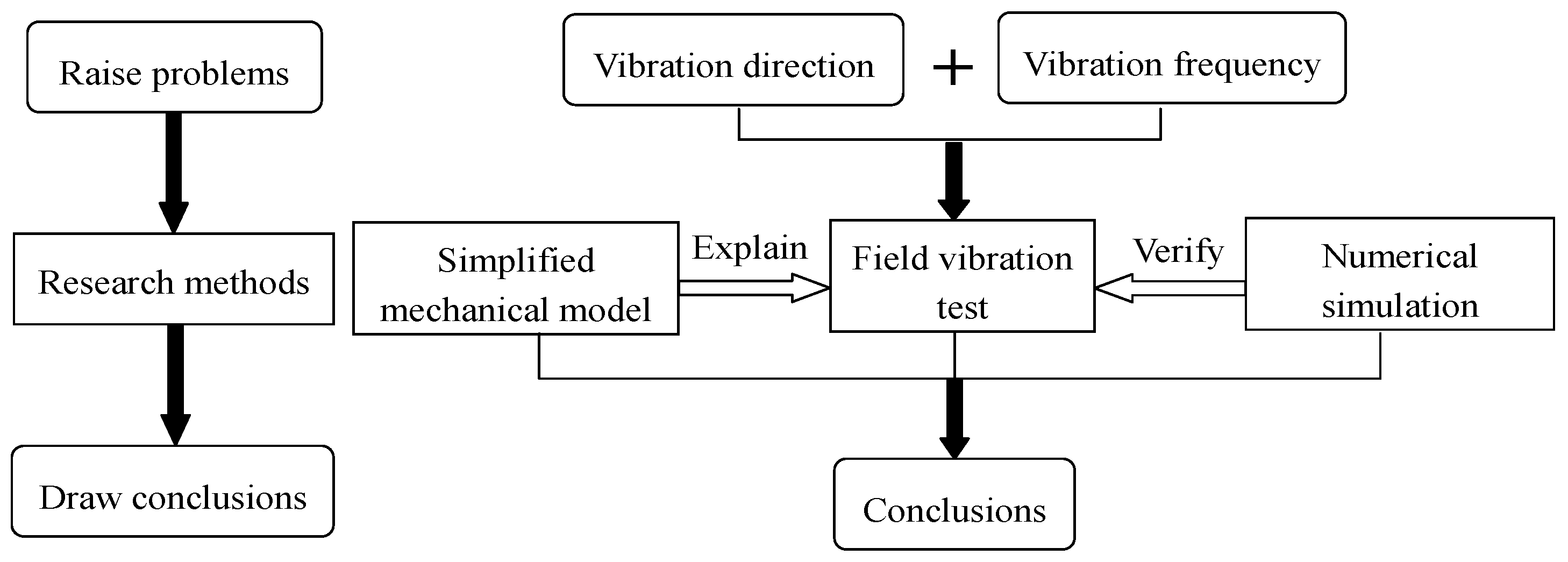
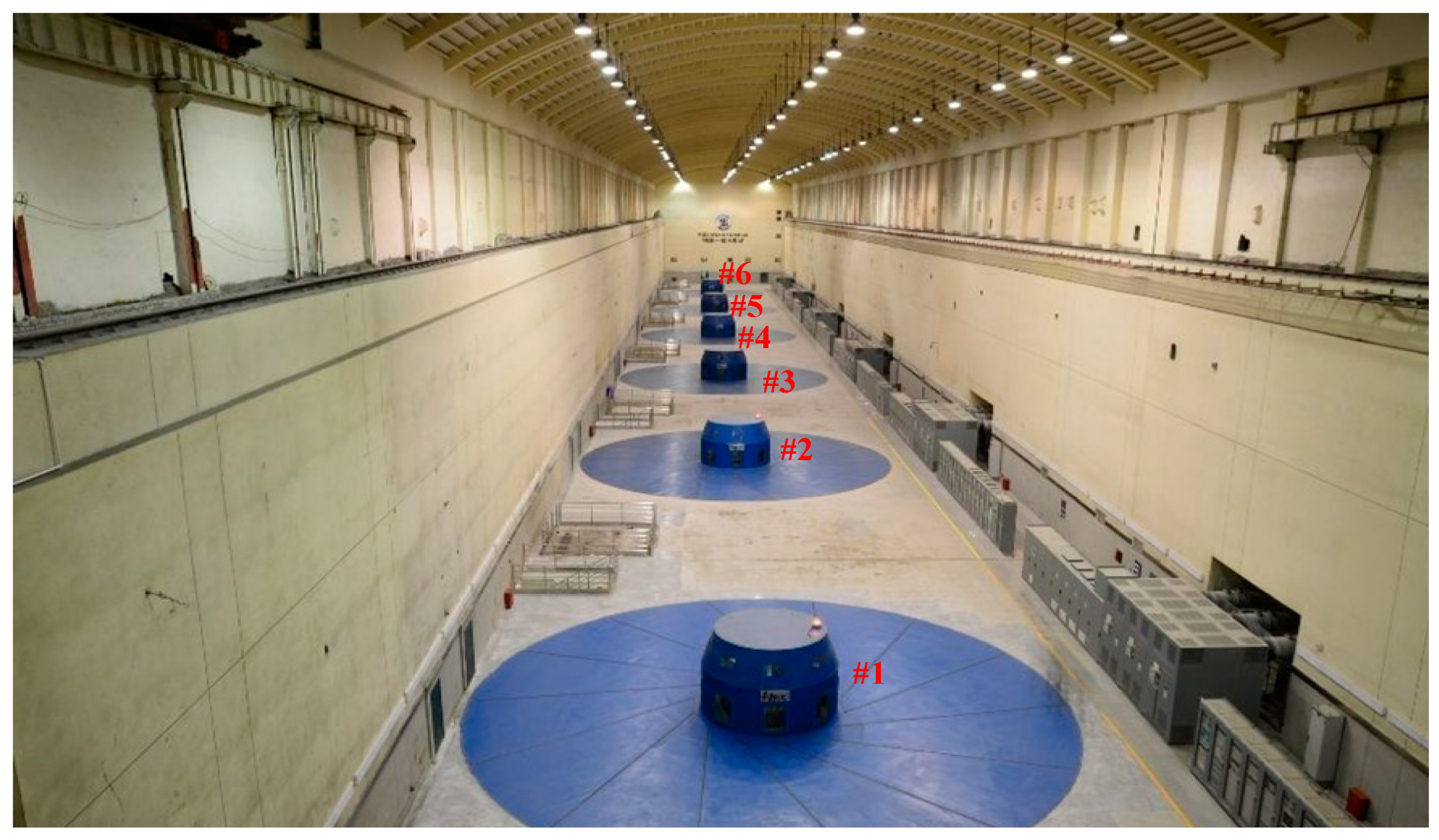
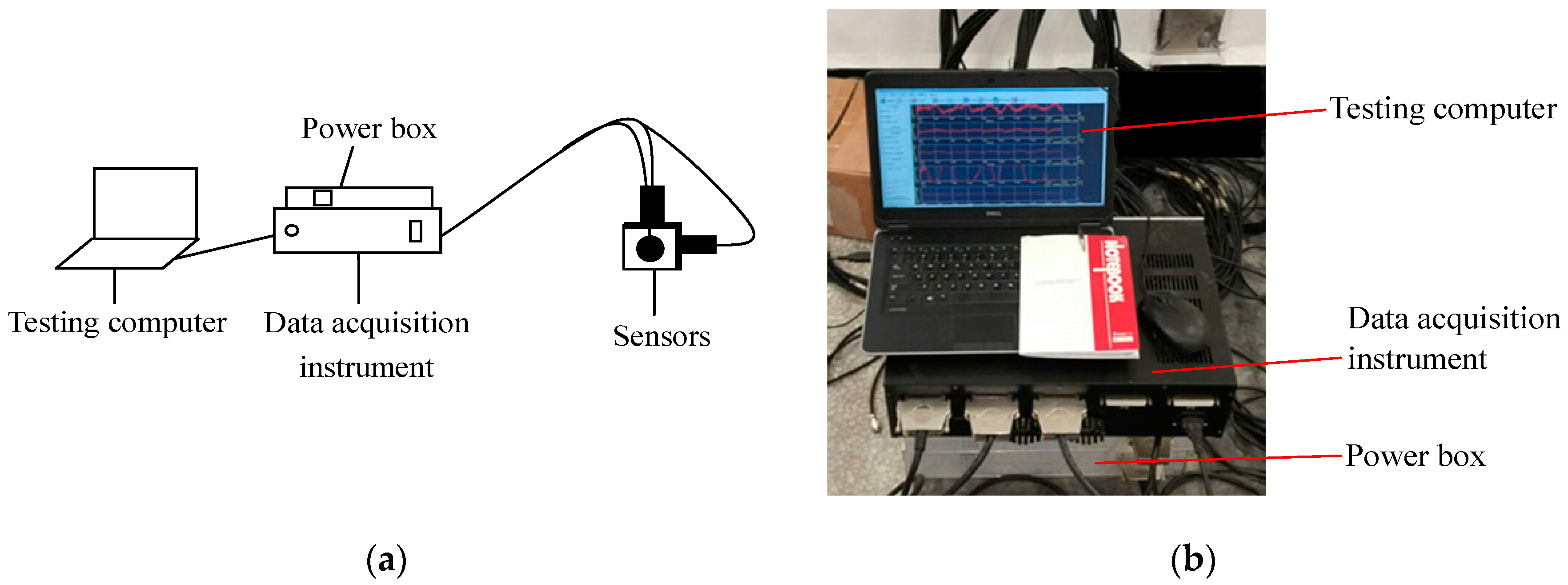
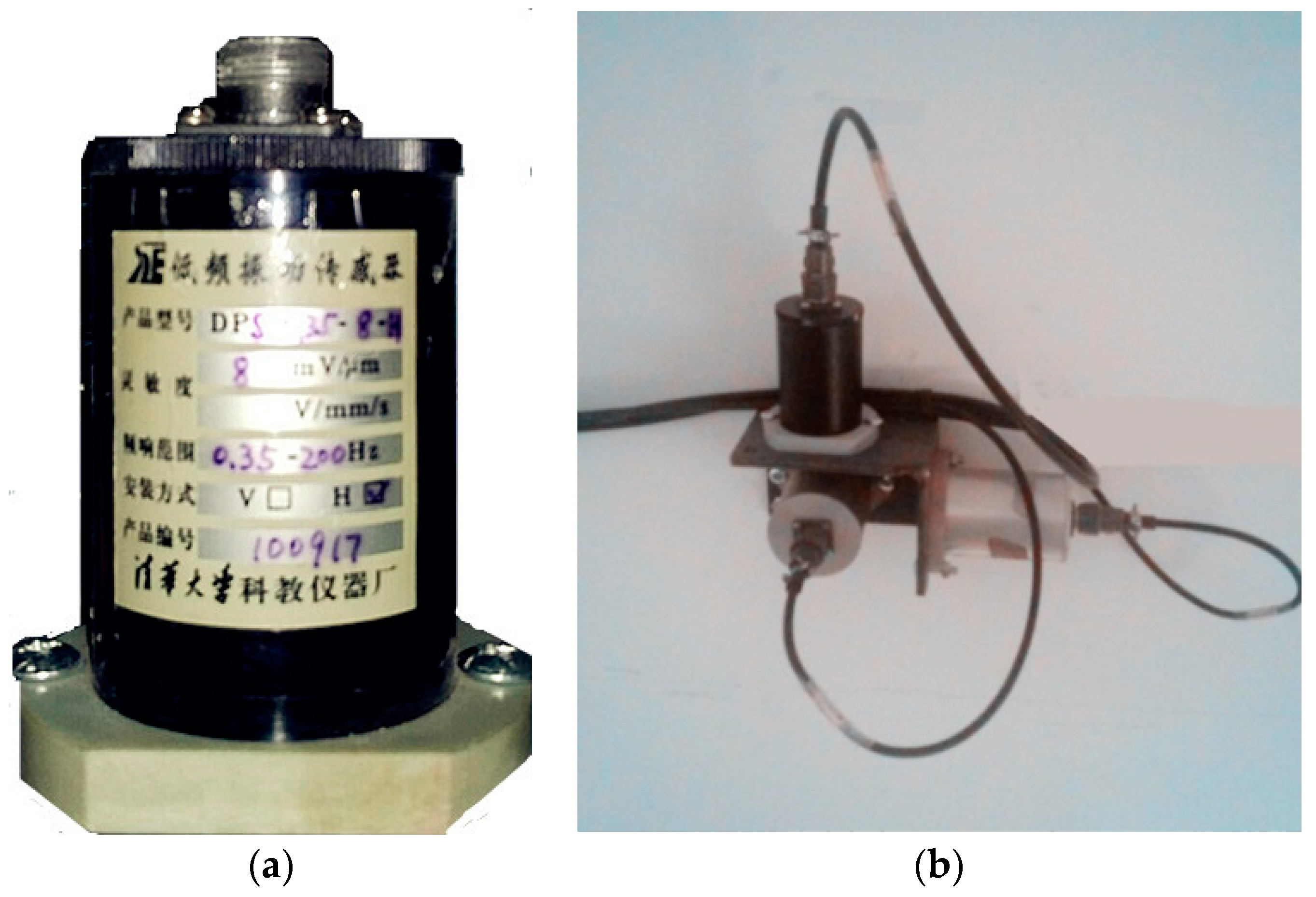
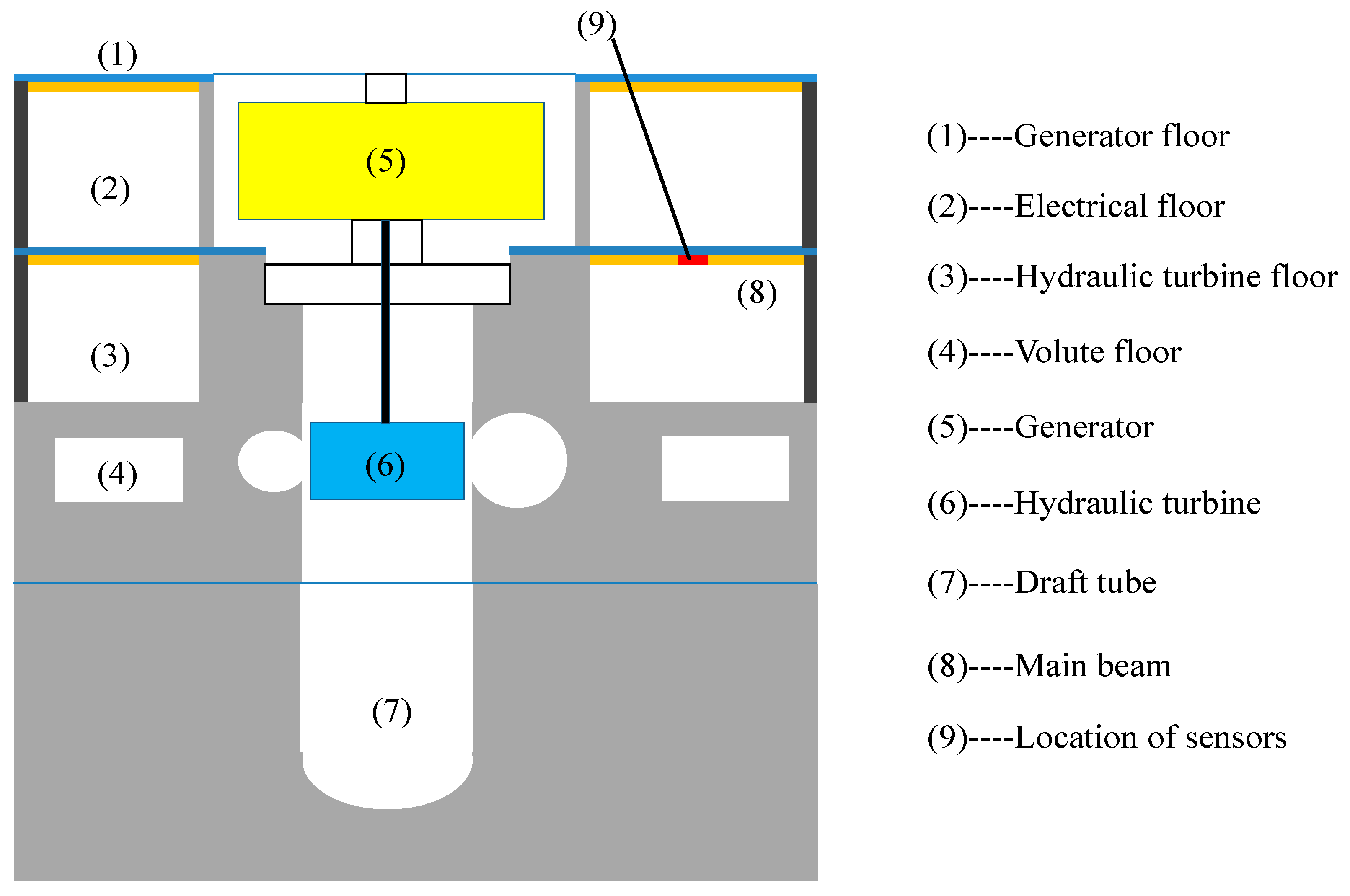


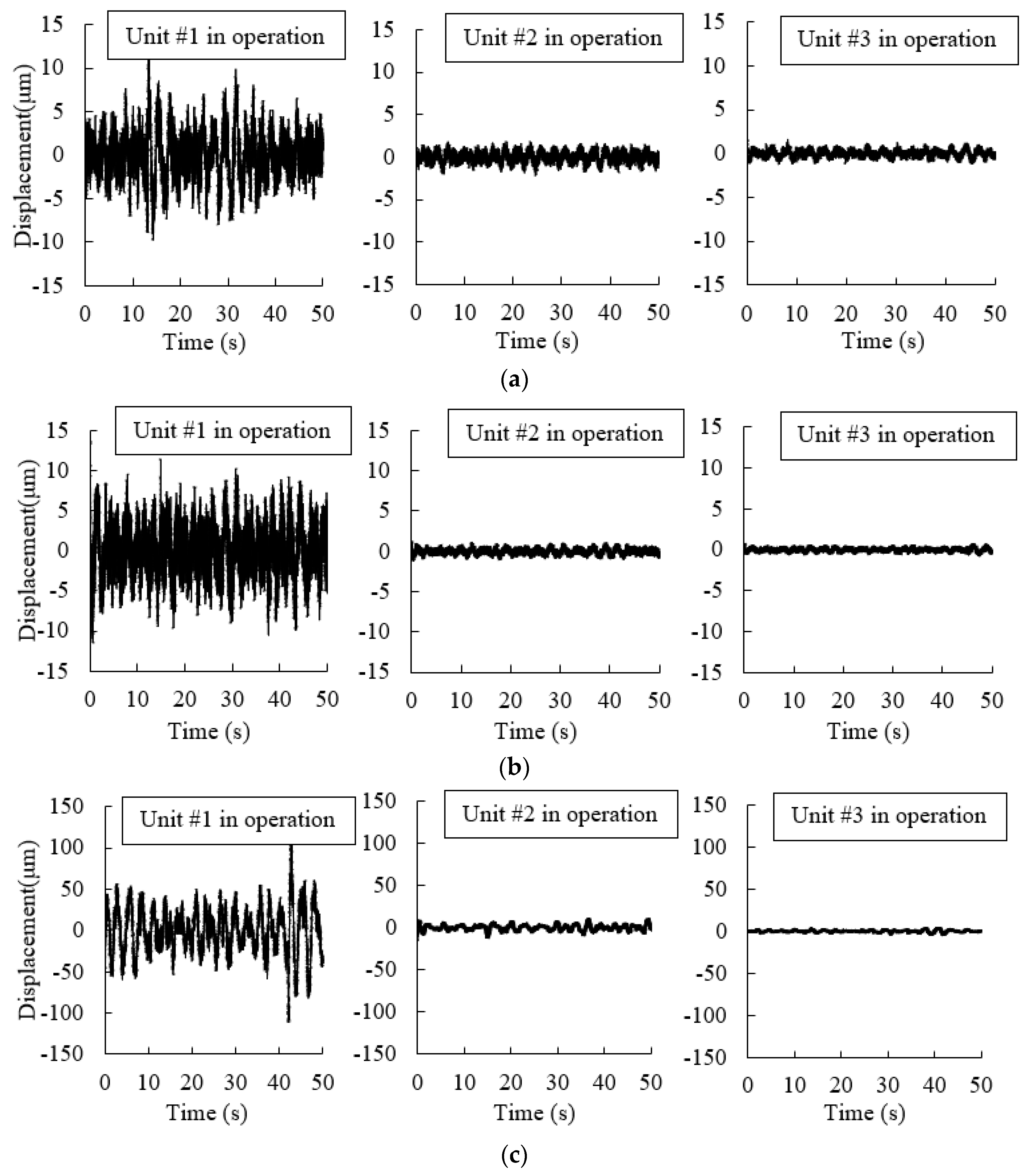
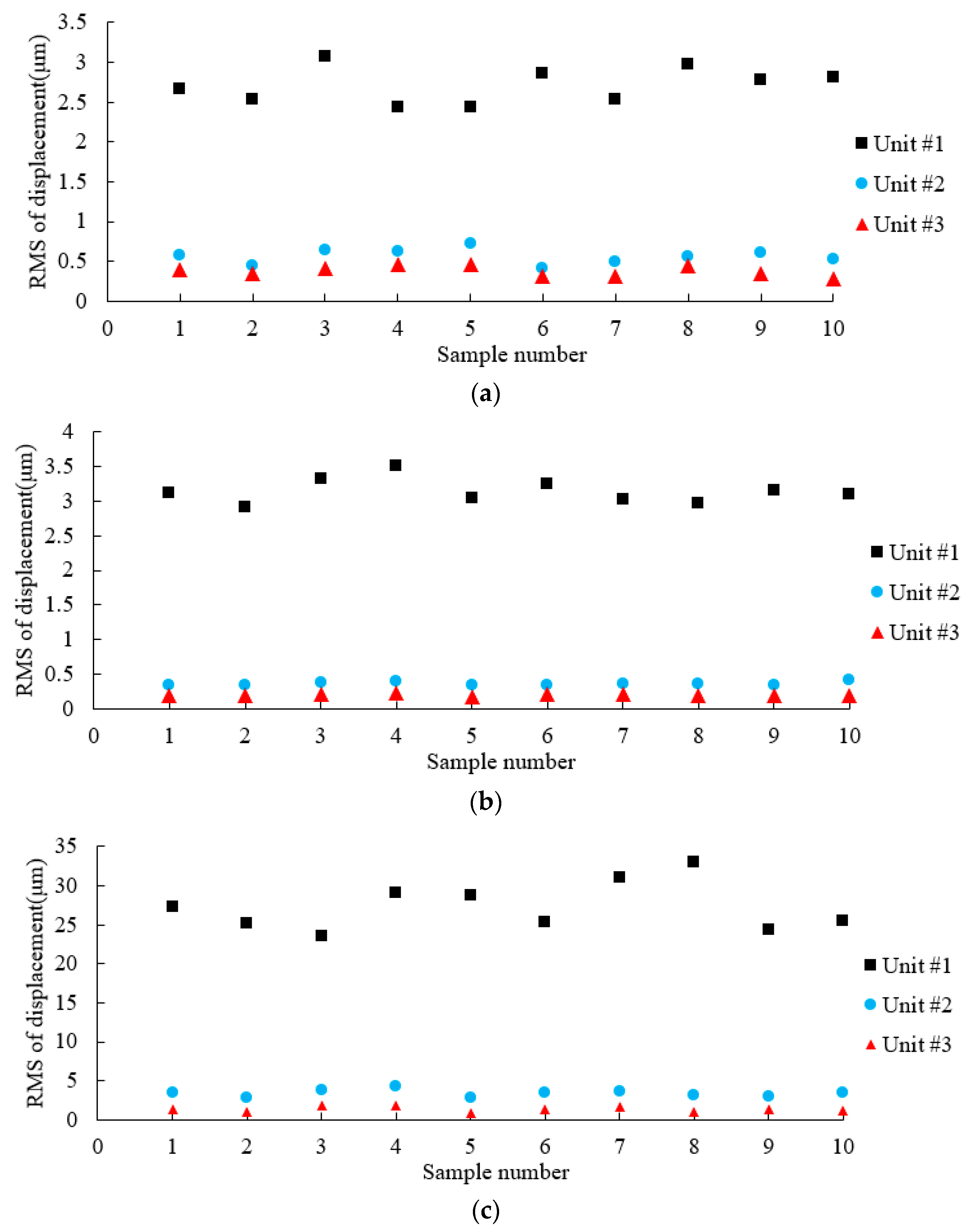
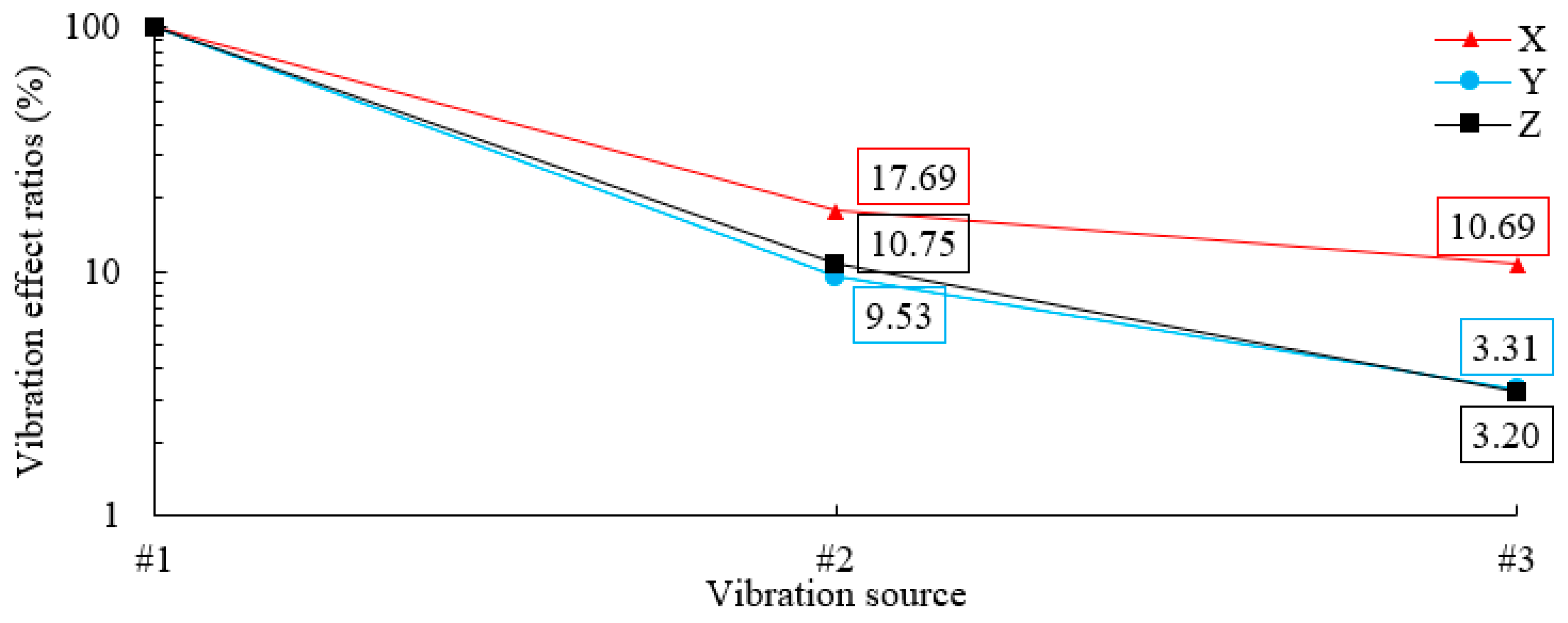
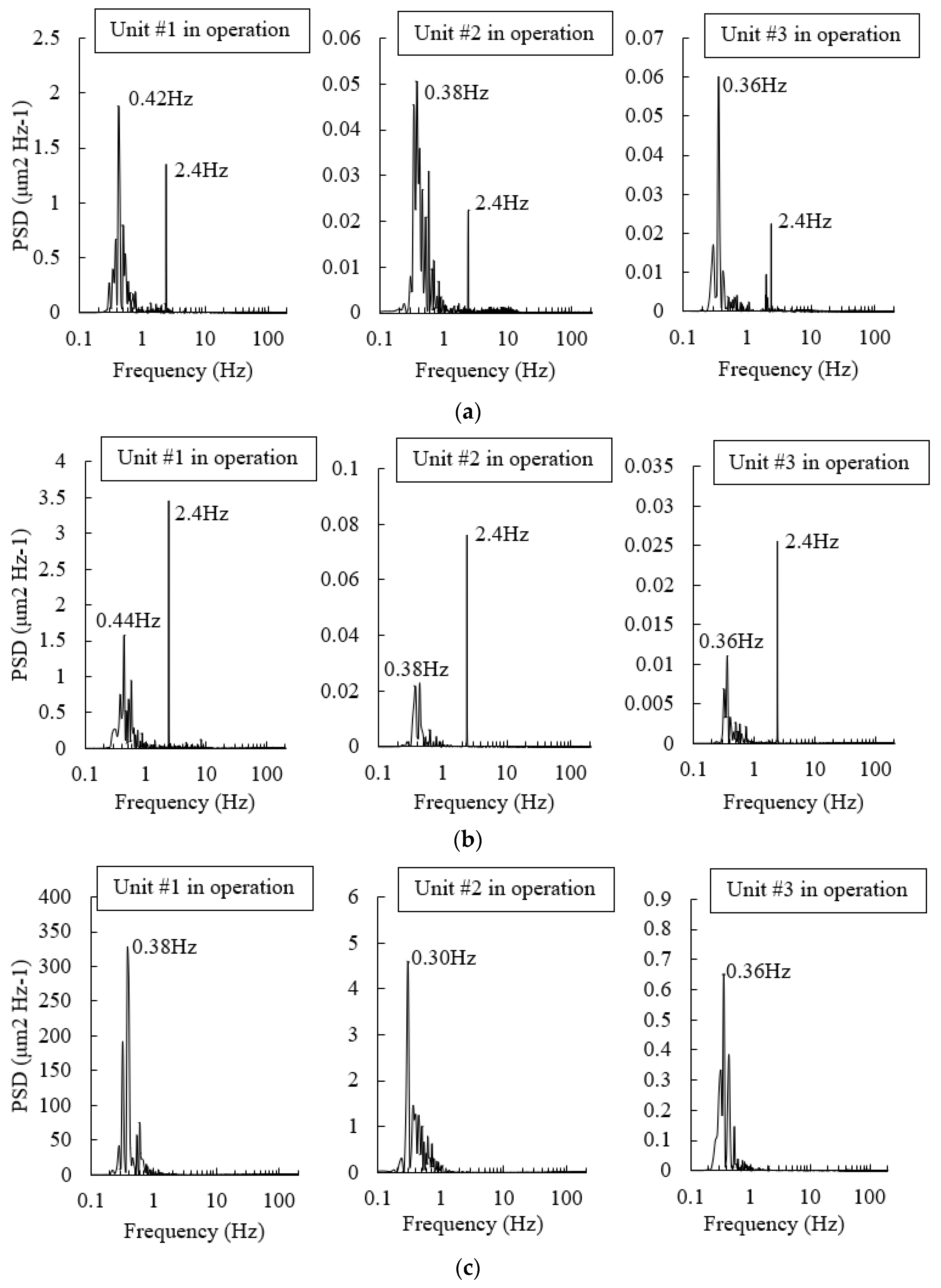
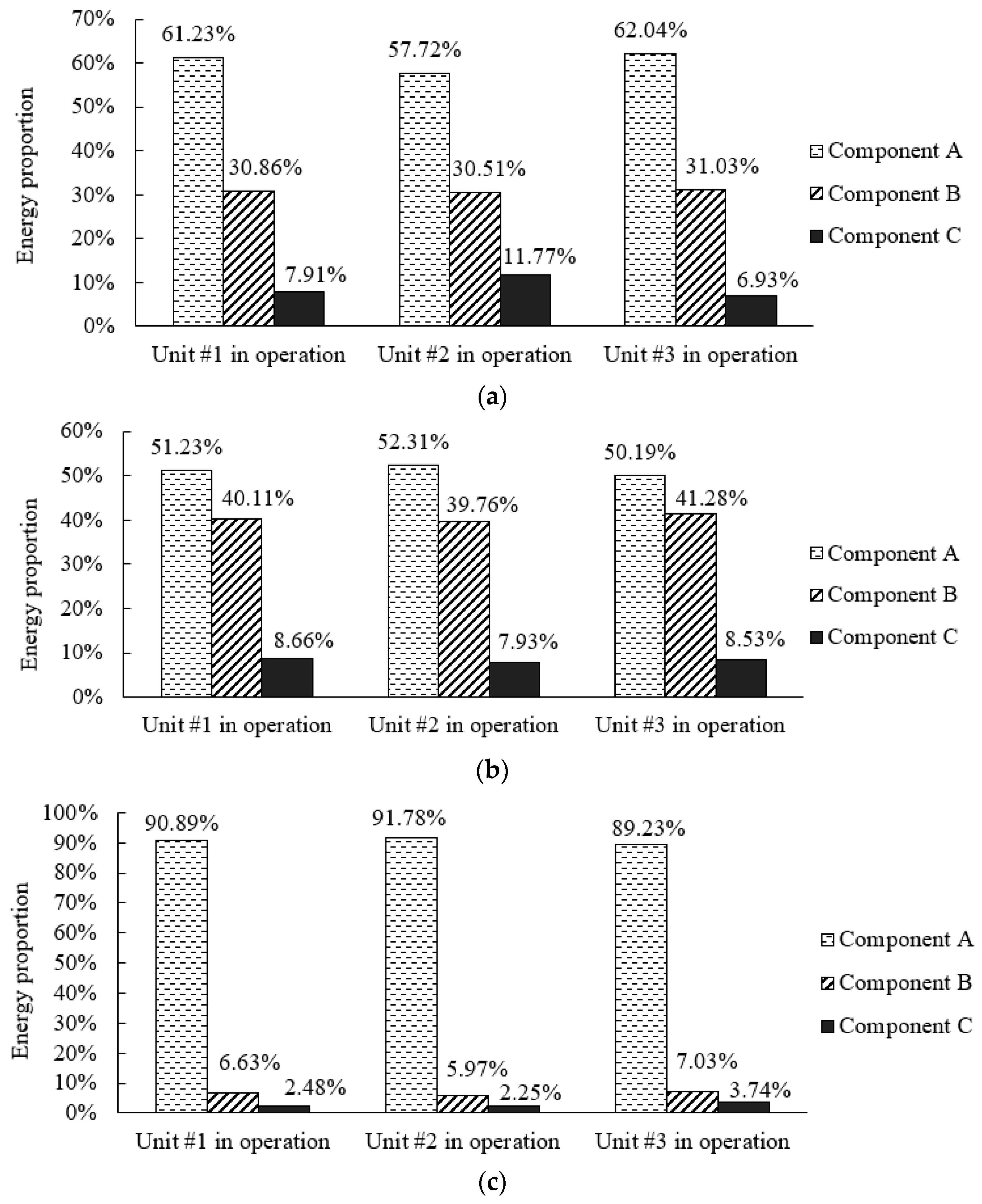
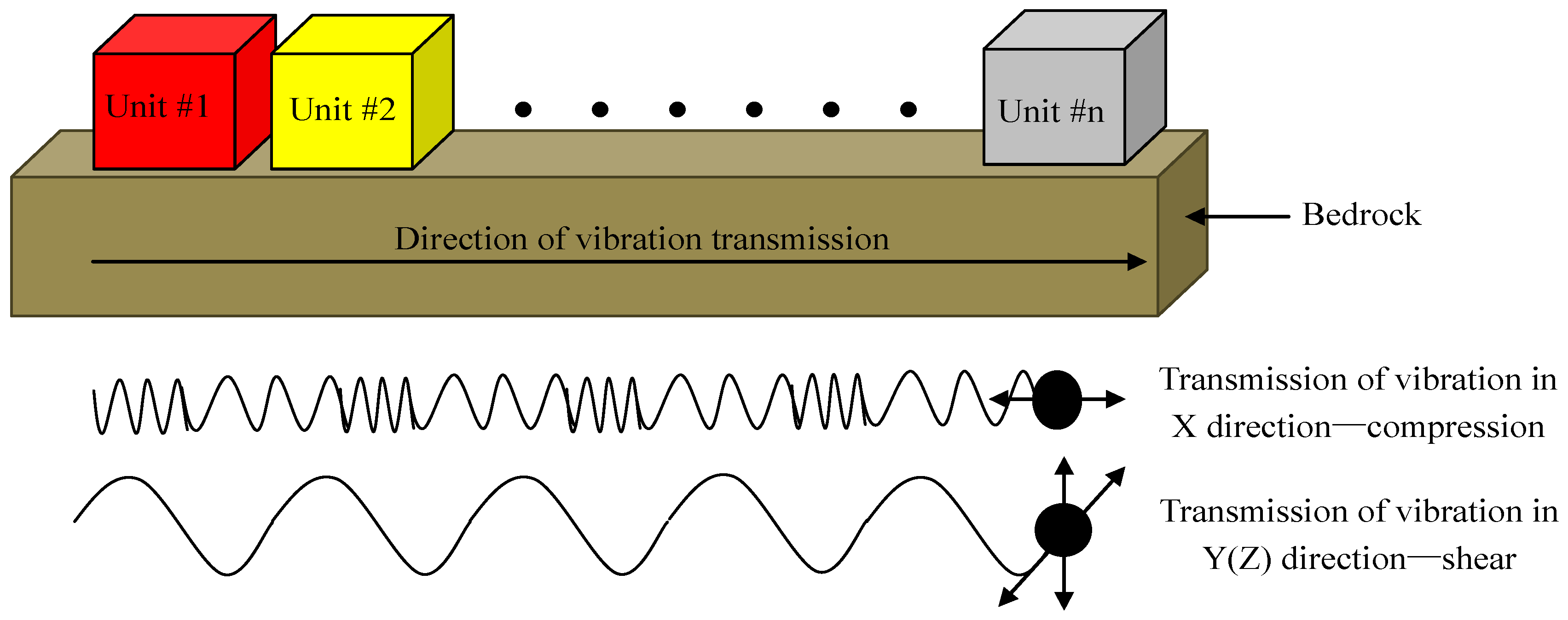

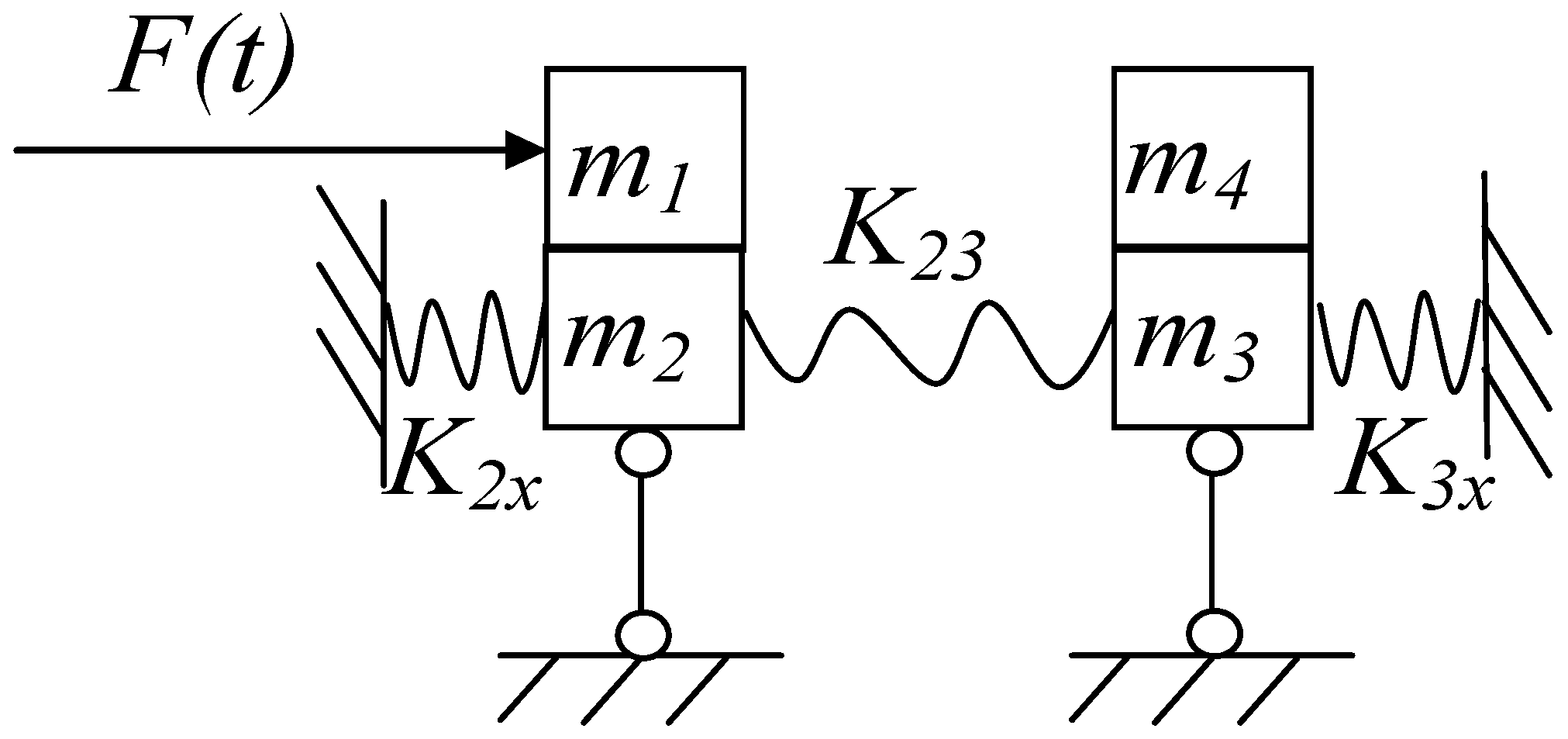
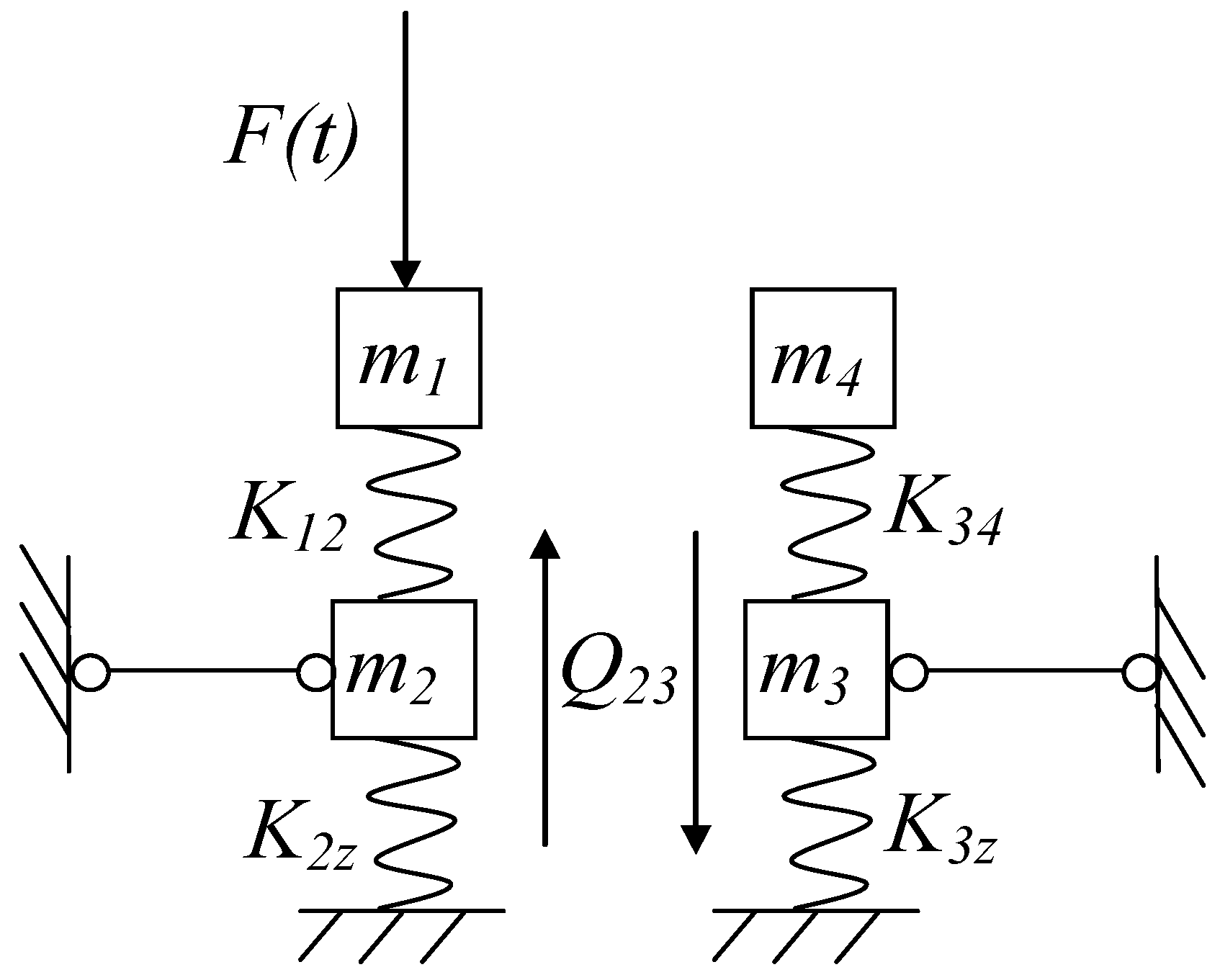

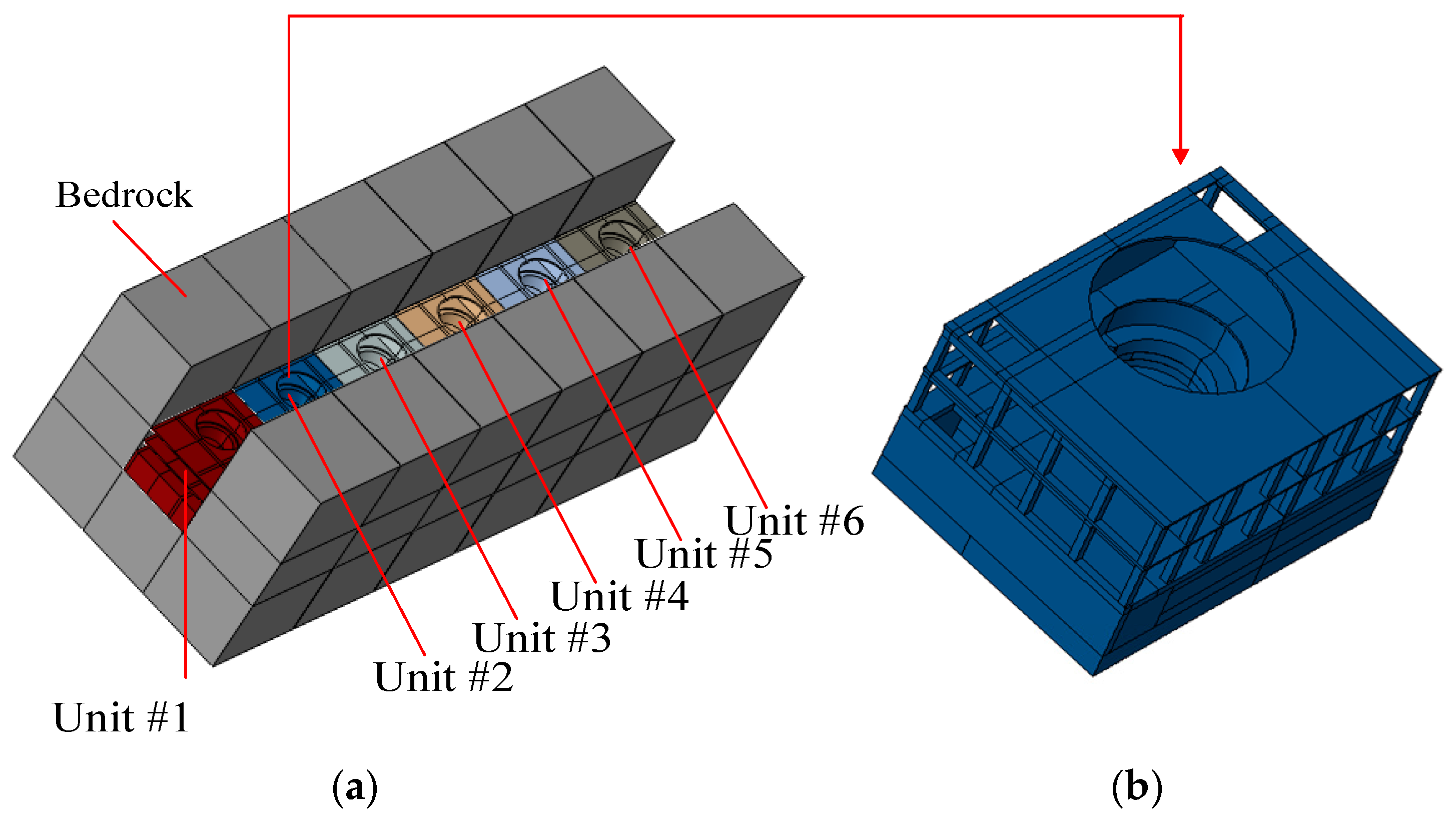

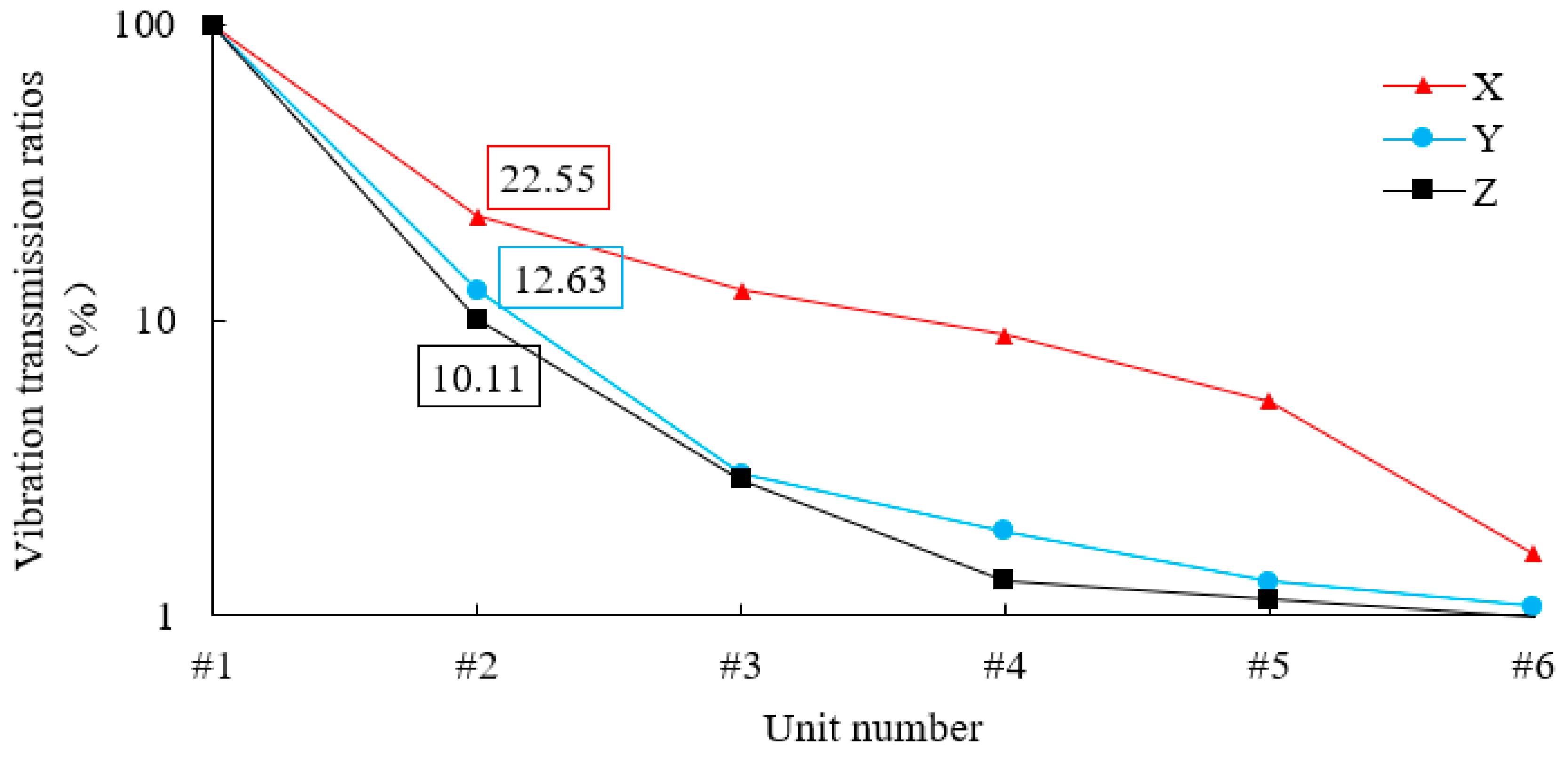
| Signal Decomposed | a7 | d7 | d6 | d5 | d4 | d3 | d2 | d1 |
| Frequency Range (Hz) | 0–1.56 | 1.56–3.13 | 3.13–6.25 | 6.25–12.5 | 12.5–25 | 25–50 | 50–100 | 100–200 |
| Direction | #1 | #2 | #3 | #4 | #5 | #6 |
|---|---|---|---|---|---|---|
| X | 100 | 22.55 | 12.69 | 8.89 | 5.33 | 1.62 |
| Y | 100 | 12.63 | 3.02 | 1.93 | 1.31 | 1.08 |
| Z | 100 | 10.11 | 2.89 | 1.32 | 1.13 | 0.99 |
| Frequency (Hz) | #1 | #2 | #3 | #4 | #5 | #6 |
|---|---|---|---|---|---|---|
| 1 | 100 | 22.55 | 12.69 | 8.89 | 5.33 | 1.62 |
| 2.4 | 100 | 22.57 | 12.69 | 8.90 | 5.33 | 1.61 |
| Direction | Simplified Model | Field Test | Numerical Simulation |
|---|---|---|---|
| X | 25 | 17.69 | 22.55 |
| Y | 16 | 10.69 | 12.63 |
| Z | 16 | 10.74 | 10.11 |
© 2018 by the authors. Licensee MDPI, Basel, Switzerland. This article is an open access article distributed under the terms and conditions of the Creative Commons Attribution (CC BY) license (http://creativecommons.org/licenses/by/4.0/).
Share and Cite
Lian, J.; Wang, H.; Wang, H. Study on Vibration Transmission among Units in Underground Powerhouse of a Hydropower Station. Energies 2018, 11, 3015. https://doi.org/10.3390/en11113015
Lian J, Wang H, Wang H. Study on Vibration Transmission among Units in Underground Powerhouse of a Hydropower Station. Energies. 2018; 11(11):3015. https://doi.org/10.3390/en11113015
Chicago/Turabian StyleLian, Jijian, Hongzhen Wang, and Haijun Wang. 2018. "Study on Vibration Transmission among Units in Underground Powerhouse of a Hydropower Station" Energies 11, no. 11: 3015. https://doi.org/10.3390/en11113015




